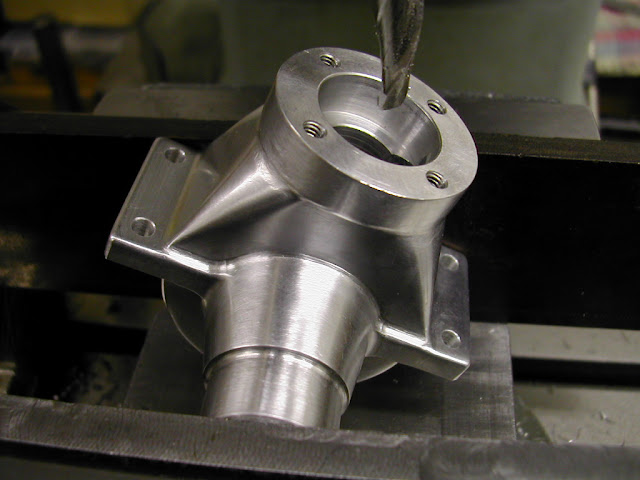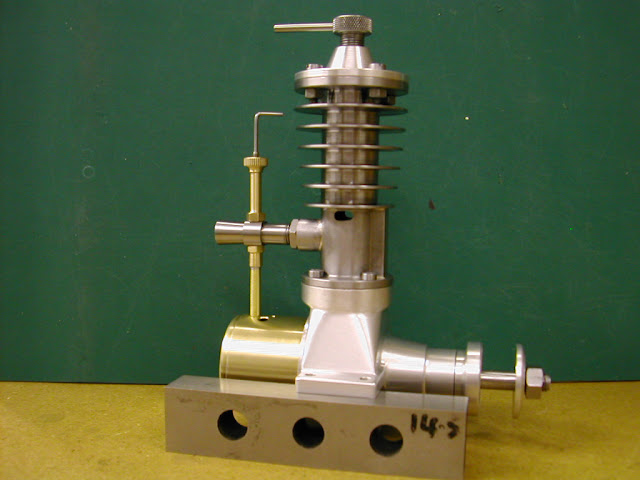jack620
Well-Known Member
Thanks Ramon.
Today I finished the CPs (I think) and started on the wrist pins. No pics yet sorry.
I am a bit worried about the fit of CPs (maybe too tight). I used the method described on Ron Chernich's website. I super glued the CP to the piston lapping mandrel, set the topslide over a bit less than 0.5 degree and turned the CP with a slight taper. When the CP would just enter the cylinder liner I stopped turning and polished the CP with wet & dry paper and oil. I did this until the CP was a press fit in the top of the liner. I am able to push the CP into the liner with my thumb, but to get it out again I need to tap it out with a piece of drill rod and hammer. I doubt the CP would return itself to the top of the cylinder under compression. However, I figured I would leave the CPs as they are and see how they go. If they stick in the liner in use I will remove them and polish them some more to loosen the fit.
Half a degree doesn't sound like much taper, but I reckon it's too much. Ron says if the walls of the CP are less than 0.5mm thick, they will compress in the liner and form a nice snug fit. My CPs have walls 0.5mm thick but I don't think they are compressing at all.
Should I try hand-lapping the CP into the top of the liner with some fine diamond paste (say 1200 grit) and oil?
The wrist pins are coming along well. They have been turned over-length, polished to a snug fit in the pistons and parted off. Tomorrow I will put them in a drill chuck and turn them to length. Then I'll heat treat them and lightly polish again (with the Dremel I think).
A question on motor assembly- Are the piston, conrod and wrist pin assembled before slipping the conrod big end onto the crankpin, or after?
Today I finished the CPs (I think) and started on the wrist pins. No pics yet sorry.
I am a bit worried about the fit of CPs (maybe too tight). I used the method described on Ron Chernich's website. I super glued the CP to the piston lapping mandrel, set the topslide over a bit less than 0.5 degree and turned the CP with a slight taper. When the CP would just enter the cylinder liner I stopped turning and polished the CP with wet & dry paper and oil. I did this until the CP was a press fit in the top of the liner. I am able to push the CP into the liner with my thumb, but to get it out again I need to tap it out with a piece of drill rod and hammer. I doubt the CP would return itself to the top of the cylinder under compression. However, I figured I would leave the CPs as they are and see how they go. If they stick in the liner in use I will remove them and polish them some more to loosen the fit.
Half a degree doesn't sound like much taper, but I reckon it's too much. Ron says if the walls of the CP are less than 0.5mm thick, they will compress in the liner and form a nice snug fit. My CPs have walls 0.5mm thick but I don't think they are compressing at all.
Should I try hand-lapping the CP into the top of the liner with some fine diamond paste (say 1200 grit) and oil?
The wrist pins are coming along well. They have been turned over-length, polished to a snug fit in the pistons and parted off. Tomorrow I will put them in a drill chuck and turn them to length. Then I'll heat treat them and lightly polish again (with the Dremel I think).
A question on motor assembly- Are the piston, conrod and wrist pin assembled before slipping the conrod big end onto the crankpin, or after?





































![DreamPlan Home Design and Landscaping Software Free for Windows [PC Download]](https://m.media-amazon.com/images/I/51kvZH2dVLL._SL500_.jpg)



































